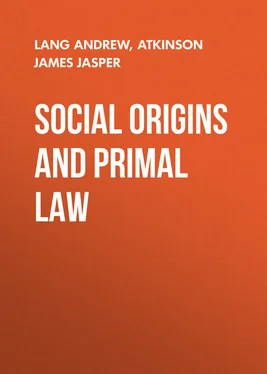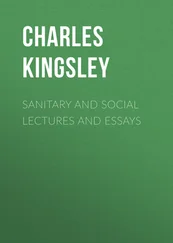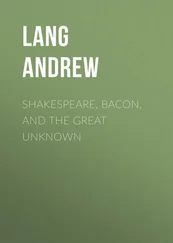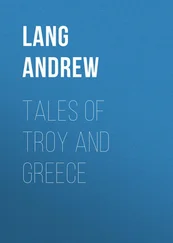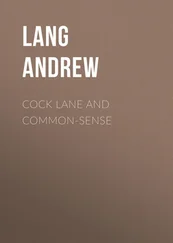Andrew Lang - Social Origins and Primal Law
Здесь есть возможность читать онлайн «Andrew Lang - Social Origins and Primal Law» — ознакомительный отрывок электронной книги совершенно бесплатно, а после прочтения отрывка купить полную версию. В некоторых случаях можно слушать аудио, скачать через торрент в формате fb2 и присутствует краткое содержание. Жанр: foreign_antique, foreign_prose, на английском языке. Описание произведения, (предисловие) а так же отзывы посетителей доступны на портале библиотеки ЛибКат.
- Название:Social Origins and Primal Law
- Автор:
- Жанр:
- Год:неизвестен
- ISBN:нет данных
- Рейтинг книги:3 / 5. Голосов: 1
-
Избранное:Добавить в избранное
- Отзывы:
-
Ваша оценка:
- 60
- 1
- 2
- 3
- 4
- 5
Social Origins and Primal Law: краткое содержание, описание и аннотация
Предлагаем к чтению аннотацию, описание, краткое содержание или предисловие (зависит от того, что написал сам автор книги «Social Origins and Primal Law»). Если вы не нашли необходимую информацию о книге — напишите в комментариях, мы постараемся отыскать её.
Social Origins and Primal Law — читать онлайн ознакомительный отрывок
Ниже представлен текст книги, разбитый по страницам. Система сохранения места последней прочитанной страницы, позволяет с удобством читать онлайн бесплатно книгу «Social Origins and Primal Law», без необходимости каждый раз заново искать на чём Вы остановились. Поставьте закладку, и сможете в любой момент перейти на страницу, на которой закончили чтение.
Интервал:
Закладка:
Moreover, the Arunta, and cognate tribes, occupy an area of 750 miles, and their meetings and discussions last for months. A people truly primitive cannot be conceived as capable of such immense local associations, and of such prolonged and pacific assemblies. Again, Messrs. Spencer and Gillen, rightly or wrongly, believe that 'communal marriage' is the earlier institution, and that it persists, 'slightly modified' among the Urabunna, but not among the Arunta. Thus, beyond all doubt, the Arunta are more developed, more advanced, than the Urabunna, and it is hardly safe to say that, where their organisation differs from that of the Urabunna, and other tribes in general, it differs because it is more 'primitive.' It must be less primitive, a special divergence from the type.
ARUNTA METAPHYSICS
Again, as proof that they are in no chrysalis stage, the Arunta possess a reasoned theory of things, so ingenious and complex, so peculiar, so extraordinary, so carefully atheistic, that one could scarcely believe it possible for naked savages, were it not so well attested. The theory is that of the original evolution of types of life into plants and animals, which, with the minimum of extra-natural aid, became human. The human beings possessed souls, which on the death, or disappearance into earth, of the original owners, were hereditary, being reborn into Arunta children. These souls each of a given totem (the plant or animal or other thing which first became human) haunt certain local centres. One place is the centre of Grub totem souls, another of Cat totem souls, and so forth. Each new child is of the totem of the haunted locality where the mother supposes that she conceived it; a totem soul of that locality has become incarnate in her, and from her is born. Thus the wife may be of one totem, the child of another; the husband may be of the wife's totem, of the child's, or of another. The totem is thus no bar to marriage, and is not inherited, all this being the result of the peculiar philosophic system of the Arunta. Their totemism is thus a 'sport,' and not the original form of the institution.
We cannot reverse the case, the philosophy of hereditary totemic souls cannot be the result of the present mode of inheriting the totem from the group of souls that haunts each locality, it cannot be a myth invented to explain that custom. That custom requires the peculiar Arunta soul-belief as its basis, and cannot exist without the belief. If the child received its totem name from the place where it is born , we might say, 'Originally the child was called after the place of its birth .' (Arunta children still receive territorial personal names from the place of their birth.) 'Later, Totemism came in with totem local names, each place having a totem title. The local totem name of the place where a child was born was then given to each child. Still later, arose a myth that totem souls haunted each place, and that the child received its totem name because a local totem soul was incarnated in it, at the place where it was born.' We cannot maintain this theory – which makes the present Arunta belief a myth to explain the present Arunta custom – because that custom it does not explain. The child receives its totem name, not from the place where it is born, but from the place where the totem soul entered into its mother. Nor can we assume that totem names were originally given, not to human groups, but to districts of territory. Thus the present Arunta mode of obtaining the totem, in each case, is the direct result of the Arunta philosophic belief. That belief is peculiar, is elsewhere unheard of, is the property of a tribe distinctly more advanced in marriage rules, and local solidarity, than some of its neighbours, and therefore cannot be primary. It follows that the Arunta mode of obtaining the totem, not by inheritance, is not 'primitive,' is not the original model from which the rest of savage mankind has diverged. This I state, because, as a rule, a belief exists to explain an institution, and, as a rule, an institution is not the result of a belief.
ARUNTA TOTEM EATING AND TRADITIONS
Each Arunta totem kin may now eat, in moderation, of its own totem, and each kin does magic ( Intichiuma ) for the benefit of its totem, as part of the food supply of the tribe in general. The traditions represent men and women of the same totem as, of old, usually intermarrying (that is, as endogamous): while they are also said, as a rule, to have fed almost exclusively on their totems, being thus endophagous.
All these usages, real or traditional (except doing magic for the benefit of the totem), are at the opposite pole from the customary exogamous and exophagous Totemism of savage tribes all over the world, and even in Australia. If, therefore, the Arunta and tribes practising the same usages are primitive (it may be, and has been argued), their Totemism is, in origin, the earliest known case of the division of labour; each group selecting and working (by magic) for the benefit of its totem, as part of the tribal food supply. I elsewhere argue that each group must probably have had a recognised connection with its totem, before it set out to do magic for the propagation of the creature. 115 115 See 'The Origin of Totemism,' infra .
But I have also maintained that the Arunta are far from being 'primitive,' but are rather a 'sport,' and that their usages represent a local variation from the central stream of Totemism; not Totemism in its earliest known form.
DR. DURKHEIM ON THE ARUNTA
I had written on this topic in the Fortnightly Review (June, 1899), and in another chapter of this book ('The Origin of Totemism'), before I saw the essay of Professor Durkheim, of Bordeaux, Sur le Totémisme . 116 116 L'Année Sociologique , 1900-1901, pp. 82-121.
It is encouraging to find that Dr. Durkheim, independently, has worked out the same theory – namely, that the Arunta are not in the primitive stage of Totemism, but represent a very peculiar divergence from the type, and that their historical legends (more or less accepted by Mr. Frazer and Mr. Spencer) are mainly myths, told to account for certain facts in their social arrangements. We are not to reason from their single case, says Dr. Durkheim, as against the great mass of our knowledge of Totemism and totemistic exogamy and exophagy. 'In place of being a perfectly pure example of the totemistic régime , is not Arunta Totemism a later and disfigured ( dénaturée ) development?' For many reasons, says Dr. Durkheim, 'the Arunta are among the most advanced of the Australian peoples,' 117 117 Ibid . v. 89-90.
and he gives his grounds for this opinion, some of which I had already adduced in 1899. Entering into detail, Dr. Durkheim readily shows that, though the Arunta now permit marriage between persons of the same totem (which is not hereditary on either side, but casual), they are, for all that, exogamous, in a fashion resulting from precise Totemism in their past.
They may not marry within the two primary divisions (which Dr. Durkheim styles 'phratries'). Each phratry contains two (sometimes four) other 'classes' (exogamous), and phratries arose in the combination of 'two elementary exogamous totem groups' – as I have already suggested. Now phratries, we have agreed with Mr. Howitt and Mr. Fison, were, in all probability, themselves originally totemic. Mr. Frazer also says, 'We should infer that the objects from which the Australian phratries take their names were originally totems. But there seems to be direct evidence that both the phratries and subphratries actually retain, in some tribes, their totems.' 118 118 Totemism , p. 83.
If the opinion be correct, the phratries of the Arunta, which regulate their marriages, were originally local totem groups. On my system, then, namely, that totem kins were originally, or very early became, exogamous, were exogamous before 'phratries' arose, and before the so-called 'bisection' was made, then the Arunta organisation was originally that of exogamous Totemism. At first, though not now, totems regulated Arunta marriages.
Интервал:
Закладка:
Похожие книги на «Social Origins and Primal Law»
Представляем Вашему вниманию похожие книги на «Social Origins and Primal Law» списком для выбора. Мы отобрали схожую по названию и смыслу литературу в надежде предоставить читателям больше вариантов отыскать новые, интересные, ещё непрочитанные произведения.
Обсуждение, отзывы о книге «Social Origins and Primal Law» и просто собственные мнения читателей. Оставьте ваши комментарии, напишите, что Вы думаете о произведении, его смысле или главных героях. Укажите что конкретно понравилось, а что нет, и почему Вы так считаете.
